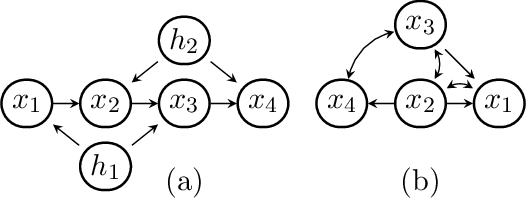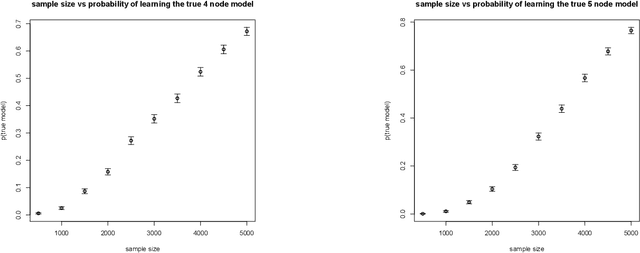Parameter and Structure Learning in Nested Markov Models
Paper and Code
Jul 20, 2012



The constraints arising from DAG models with latent variables can be naturally represented by means of acyclic directed mixed graphs (ADMGs). Such graphs contain directed and bidirected arrows, and contain no directed cycles. DAGs with latent variables imply independence constraints in the distribution resulting from a 'fixing' operation, in which a joint distribution is divided by a conditional. This operation generalizes marginalizing and conditioning. Some of these constraints correspond to identifiable 'dormant' independence constraints, with the well known 'Verma constraint' as one example. Recently, models defined by a set of the constraints arising after fixing from a DAG with latents, were characterized via a recursive factorization and a nested Markov property. In addition, a parameterization was given in the discrete case. In this paper we use this parameterization to describe a parameter fitting algorithm, and a search and score structure learning algorithm for these nested Markov models. We apply our algorithms to a variety of datasets.
 Add to Chrome
Add to Chrome Add to Firefox
Add to Firefox Add to Edge
Add to Edge